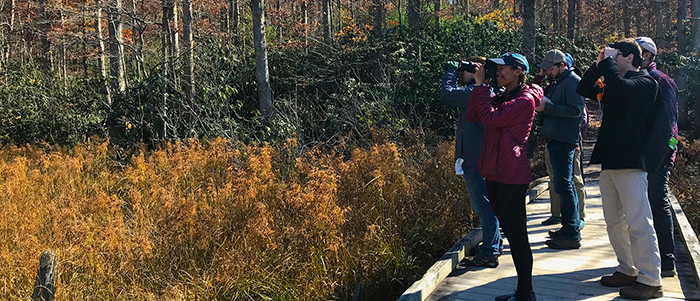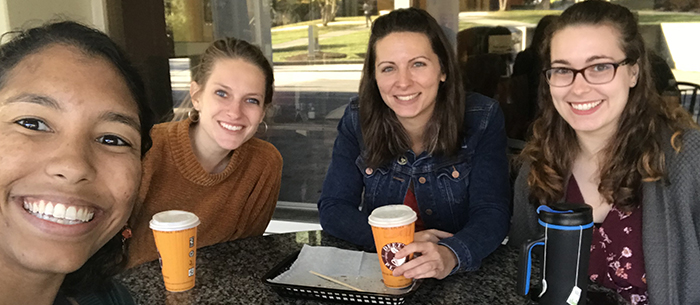[vc_row][vc_column][vc_column_text]From VT News | November 22, 2019
Wetlands play an important role in the carbon cycle, aiding in the storage and distribution of this crucial energy resource. Now a collaborative grant from the National Science Foundation will allow scientists to research the linkages between hydrological and carbon dynamics taking place in forested wetlands to better understand the role that these ecosystems plays in the export, storage, and emission of carbon.
“Wetlands are productive ecosystems, generating large amounts of vegetation biomass; at the same time, they also receive leaf fall and other carbon inputs from adjacent upland areas,” explained Daniel McLaughlin, assistant professor in Virginia Tech’s College of Natural Resources and Environment and principal investigator for the grant.
“They can then store that carbon in organic soil, emit it as carbon dioxide or methane, or export it as dissolved organic carbon to downstream waters, where it will contribute to aquatic food webs,” he continued. “While these wetland carbon processes are well recognized, less is known regarding how they are regulated by water storage and exchange within networks of multiple, interacting wetlands.”
With wetlands under threat from land use changes, it is crucial for scientists to understand how hydrology influences wetland carbon export and emissions in order to strengthen efforts to conserve and restore wetland ecosystems.
To that end, Virginia Tech scientists will be working in collaboration with researchers from the University of Maryland and the University of Alabama to study isolated wetlands in the Delmarva Peninsula area of Maryland.
“We’re focused on a particular type of wetland in the Delmarva Peninsula called Delmarva bays,” said McLaughlin, a faculty member in the Department of Forest Resources and Environmental Conservation and an affiliate of the Virginia Water Resources Research Center. “These depressional wetlands are small and geographically isolated, dotting the Delmarva landscape.”
“This particular wetland-rich landscape is a good representation of other regions where small wetlands dominate, interact, and have a cumulative effect on landscape-scale water and carbon cycling. Our work hopes to broadly inform wetland management in Delmarva and in other wetland-rich regions,” he added.
Co-principal investigator Erin Hotchkiss, assistant professor in the Department of Biological Sciences in Virginia Tech’s College of Science, said that the project will use methods and knowledge from multiple disciplines to provide a comprehensive understanding of wetland dynamics.
“I’m excited this project includes collaborators whose strengths are in hydrology, ecology, and biogeochemistry,” said Hotchkiss, an affiliate of the Global Change Center housed in the Fralin Life Sciences Institute. “These fields have great potential to inform one another, but we don’t often collaborate across disciplines. This project is an exciting opportunity to understand how water and carbon move through wetland landscapes through multiple research angles.”
The project will use state-of-the-art sensors to collect data, making simultaneous measurements of water storage and water exchange, dissolved organic carbon, and CO2 and CH4 emissions. These sensors will allow researchers to gather high-frequency measurements that will capture the relationship between carbon processes and wetland hydrology in real time.
Co-principal investigator Durelle Scott, associate professor in Virginia Tech’s Department of Biological Systems Engineering, which is in both the College of Agriculture and Life Sciences and the College of Engineering, said that this effort has broader ramifications for reducing the amount of carbon in the atmosphere.
“When we restore wetlands, we’re often focused on restoring the hydrology and the habitat, but it’s important to also consider wetlands as a place for carbon sequestration,” said Scott, also an affiliate of the Global Change Center. “Our work will help inform the practice of restoration so these efforts can be strategic and holistic in terms of taking into account all of the variables we have to consider for successful outcomes.”
Grant funding from the National Science Foundation’s Division of Environmental Biology totaling almost $1 million is split between Virginia Tech and the University of Maryland.
— Written by David Fleming
Related story
[/vc_column_text][/vc_column][/vc_row]











